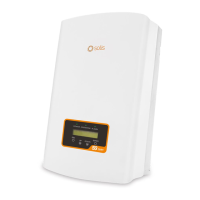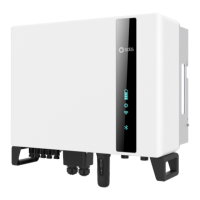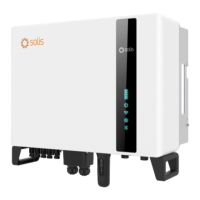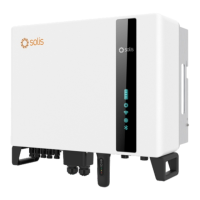User Manual
2. Measure the voltage present between the positive and negative wires of each string.
If the open circuit voltage of the string is near the maximum value accepted by the inverter,
verify the string length. Low ambient temperatures cause an increase in the string voltage
causing potential damage to the inverter.
3. Check the polarity of the string. All digital meters have a negative (“-“) indicator that
indicates when a voltage is negative; in this case a string connected in reverse polarity.
WARNING
Input voltages higher than the maximum value accepted by the inverter
(see “Specifications” in Section 9) may damage the inverter.
Although Solis inverters feature reverse polarity protection,
prolonged connection in reverse polarity may damage these protection
circuits and/or the inverter.
5.4.1.2 Leakage to ground
Measure leakage to ground to check for a DC ground fault.
5.4 Preliminary checks
WARNING
High Voltage.
AC and DC measurements should be made only by qualified personnel.
5.4.1 DC configuration
5.4.1.1 VOC and Polarity
To measure the open circuit voltage (VOC) and polarity of the individual strings, perform
the following steps:
5.4.1.1.1 Check string voltage
1. Connect the positive lead of the meter to the positive string cable of the string under test.
Connect the negative lead of the meter to the negative string cable of the string under test.
Verify DC configuration by noting the number of panels in a string and the string voltage.
Measure VOC, and check string polarity. Ensure both are correct and VOC is within
specification.
5. Commissioning
33
